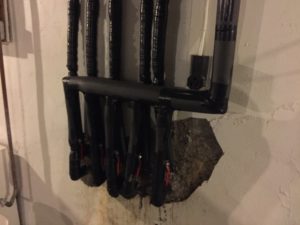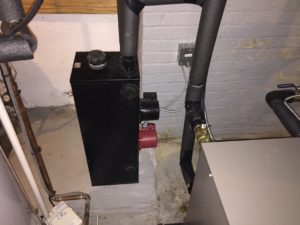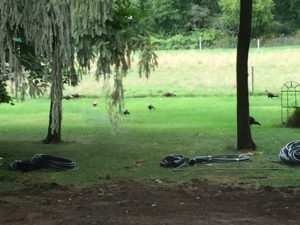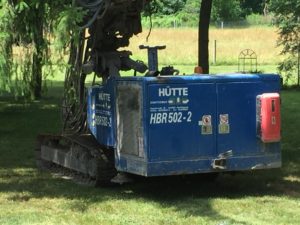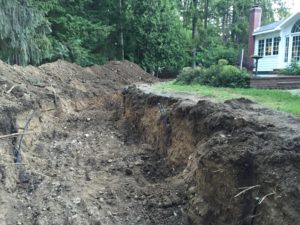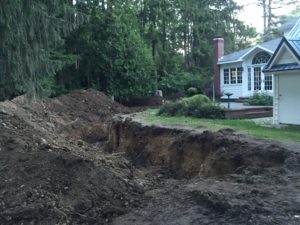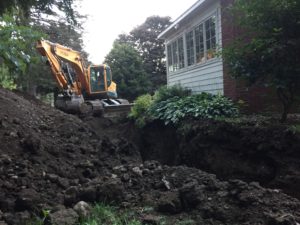As we are well into wintry weather for the year, here are some more details about our geothermal heating system.
See the earlier explanatory post about the installation process outside the house here.
In addition to the bore holes and “moat” outside the house, there was also a bit of work inside the house for the changeover to a geothermal heating system. Following the lines from outside, the first step was creating a path for the heating loops into the house.
Here is a picture of the manifold where the lines enter and exit the house.
There are 5 entry lines and 5 exit lines. This covers 5 different heating loops. Each of the 5 heating loops has the cold water leave the house, travel to the bore holes and go down and back up two 75-foot bore holes per loop to absorb heat from the ground and then travel back into the house.

